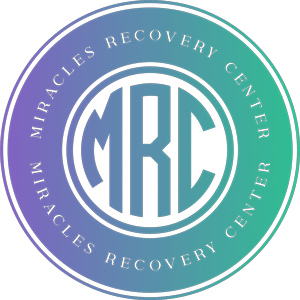Table of Contents
Understanding Insurance Coverage
Navigating insurance coverage for your recovery journey can be challenging yet crucial. Understanding how your insurance applies to Partial Hospitalization Programs (PHP) and Intensive Outpatient Programs (IOP) ensures your access to essential treatment services.
Coverage for PHP & IOP Programs
Many insurance plans, including AHCCCS, BCBS, Medicaid, Tricare, and PPOs, may offer coverage for PHP and IOP programs focused on substance use treatment. However, the specifics of coverage can vary significantly based on your plan. It’s vital to verify your plan’s benefits. Doing so will outline what services are covered, including co-pays and deductibles required for your treatment. You can learn more about which plans accept these treatments through resources like insurance-covered addiction treatment PHP.
| Insurance Type | Coverage for PHP | Coverage for IOP | Prior Authorization Required |
|---|---|---|---|
| AHCCCS | Yes | Yes | Yes |
| BCBS | Varies | Varies | Yes |
| Medicaid | Yes | Yes | Yes |
| Tricare | Yes | Yes | Yes |
| PPOs | Usually | Usually | Sometimes |
Before enrolling in a program, ensure that it accepts your insurance to avoid unexpected costs.
Verification and Benefits Clarification
Verifying your insurance benefits is a proactive step in securing treatment. Providers often require you to submit specific information to check what services your plan covers. Insurers typically use medical necessity criteria, often influenced by the American Society of Addiction Medicine (ASAM) criteria, to establish your eligibility for PHP and IOP programs. This assessment examines six dimensions to align you with the most appropriate level of care (Recovery In Motion).
While Medicare does cover PHP, it may not be accepted by all programs. When considering PHP options, ensure they meet specific criteria, such as being offered through a hospital outpatient department or community mental health center. Regular expenses such as meals and transportation may not be covered by Medicare (Rehabs.com).
Understanding your benefits under the Affordable Care Act (ACA) ensures that your insurance plan provides mental health and substance use disorder services without imposing strict caps on the treatment amount covered. With the protections from the Mental Health Parity and Addiction Equity Act (MHPAEA), your insurance provider must offer equitable coverage for mental health and substance use treatment (American Addiction Centers).
Taking these steps allows you to focus on what really matters—beginning your journey to recovery. Explore your options today for an in-network PHP program for substance abuse and find the support you need.
Levels of Care in Addiction Treatment
Understanding the levels of care available in addiction treatment is essential for selecting the right program. Here, you will learn about Partial Hospitalization Programs (PHP) and Intensive Outpatient Programs (IOP), both of which are designed to provide structured support while allowing for flexibility in your daily life.
Partial Hospitalization (PHP)
A Partial Hospitalization Program (PHP) offers a higher level of care compared to traditional outpatient programs. PHPs typically require regular attendance of at least 20 hours per week, spread over 3 to 7 days Recovery In Motion. This approach allows for intensive therapeutic support while providing you the opportunity to return home each night.
The average length of a PHP generally ranges from two to six weeks, depending on your individual progress and treatment needs Recovery In Motion. These programs help you develop coping strategies, manage potential relapses, and receive psychosocial support to encourage lasting recovery. PHPs are often considered suitable for those who have completed detox and do not require constant supervision American Addiction Centers.
| PHP Features | Description |
|---|---|
| Attendance | Minimum of 20 hours per week |
| Duration | 2 to 6 weeks |
| Frequency | 3 to 7 days per week |
| Session Length | 6 to 8 hours per day |
Discover more about how to have your PHP expenses covered by insurance in our piece on php rehab program covered by insurance.
Intensive Outpatient (IOP)
Intensive Outpatient Programs (IOP) provide a flexible approach to treatment that can fit around your busy life. IOPs typically involve fewer hours of therapy compared to PHPs, allowing you to maintain work, school, or family obligations while still focusing on your recovery.
IOP programs generally require participation for 9 to 20 hours per week, which can be scheduled during the day or evening to accommodate your needs. Treatment usually includes group therapy, individual counseling, and educational sessions about addiction and recovery.
The main goal of IOPs is to provide structured support while allowing you to engage in your daily responsibilities. If you are seeking treatment that integrates into your lifestyle while still offering the therapeutic help you need, an IOP may be the right choice for you. You can explore available options in our article on iop treatment that accepts insurance.
| IOP Features | Description |
|---|---|
| Attendance | 9 to 20 hours per week |
| Session Flexibility | Day or evening sessions |
| Treatment Types | Group therapy, individual counseling |
If you are considering your options, be sure to check out comparisons of coverage in our guide on php vs iop insurance coverage comparison.
Choosing between PHP and IOP involves evaluating your needs and circumstances. Both offer essential support and structure to help you on your recovery journey.
Importance of Commitment
Entering an in-network PHP program for substance abuse is a significant step toward recovery. Your level of commitment plays a vital role in achieving success through structured treatment, and understanding the requirements involved can be beneficial.
Program Attendance Requirements
For a Partial Hospitalization Program (PHP), regular attendance is strongly recommended, with a minimum of 20 hours per week being the typical standard for effective treatment outcomes. Commitment to the program’s schedule is crucial for achieving recovery goals (Recovery In Motion). Missing sessions can hinder your progress and may complicate your treatment experience, making it essential to prioritize your attendance and actively engage in the sessions.
| Attendance Requirement | Recommended Hours per Week |
|---|---|
| PHP Programs | 20 hours |
Treatment Outcomes
Your consistency and attendance directly correlate with the effectiveness of your treatment. Research shows that individuals who actively commit to their treatment schedule are more likely to experience positive outcomes, such as reduced cravings, improved coping mechanisms, and enhanced emotional well-being. Programs can vary in structure, including individual therapy, group therapy, and family involvement, depending on your specific needs.
Choosing a treatment program that accepts insurance can further help you manage the financial aspect of addiction care while providing you with necessary support systems. Make sure to connect with your insurance provider to understand coverage details and inquire about outpatient rehab with insurance coverage options that best suit your situation.
Maintaining commitment to your PHP is essential, as it sets the foundation for your recovery journey. The support received during these structured sessions is invaluable and helps navigate the challenges associated with addiction.
Factors Influencing Coverage
Understanding how insurance influences access to addiction treatment services such as PHP (Partial Hospitalization Programs) and IOP (Intensive Outpatient Programs) is essential in your journey. Various factors, including medical necessity criteria and prior authorization processes, can significantly impact your coverage.
Medical Necessity Criteria
Insurance companies utilize medical necessity criteria to determine eligibility for PHP and IOP programs. This assessment often aligns with the American Society of Addiction Medicine (ASAM) Criteria, which evaluates individuals across six dimensions. These dimensions help match you with the level of care that best fits your circumstances, ensuring that you receive appropriate treatment.
| ASAM Dimensions for Medical Necessity | Description |
|---|---|
| Dimension 1 | Acute intoxication and/or withdrawal potential |
| Dimension 2 | Biomedical conditions and complications |
| Dimension 3 | Emotional, behavioral, or cognitive conditions |
| Dimension 4 | Readiness to change |
| Dimension 5 | Relapse, continued use, or continued problem potential |
| Dimension 6 | Recovery/living environment |
For a deeper look into your options and the requirements regarding insurance, you can review our guide on intensive outpatient programs covered by insurance.
Prior Authorization Relaxation
Historically, prior authorization was a mandatory step for many addiction treatment services. However, due to the rising opioid epidemic, many health plans have relaxed these requirements, making it easier for you to access care. PHPs and IOPs, once heavily scrutinized, may now face fewer restrictions when it comes to obtaining coverage (Recovery In Motion). This change means that you may experience quicker access to necessary treatment.
With recent regulations under the Affordable Care Act (ACA) and the Mental Health Parity and Addiction Equity Act (MHPAEA), insurance coverage for mental health services, including substance use treatment, has become more standardized. This means you should expect at least some coverage for PHP and IOP services. For more resources regarding your insurance options, explore our articles on php for dual diagnosis treatment with insurance coverage and iop addiction program that takes insurance.
Navigating insurance coverage can feel overwhelming, especially when seeking support for addiction. Understanding these factors can empower you to make informed decisions regarding your treatment and ensure you receive the support needed on this journey.
Choosing the Right Program
Finding an in-network PHP program for substance abuse that fits your needs is crucial for your recovery journey. Below, we discuss the duration of PHP programs and the payment options available to you.
Duration of PHP Programs
Typically, a Partial Hospitalization Program (PHP) lasts between two to six weeks. The exact length can vary depending on individual progress and specific treatment needs (Recovery In Motion). During this time, you’ll engage in structured therapeutic activities designed to support your recovery and address any co-occurring mental health issues.
| PHP Duration | Description |
|---|---|
| 2 Weeks | Short-term intensive intervention for those displaying significant stability. |
| 4 Weeks | Standard length for comprehensive treatment addressing various aspects of recovery. |
| 6 Weeks | Extended program for individuals needing more time to establish recovery or dealing with complex issues. |
Choosing the right duration will depend on your personal situation and how you respond to the treatment.
Payment Options for PHPs
Understanding your payment options is essential for accessing treatment. Various methods of financing your PHP can alleviate the financial burdens associated with recovery.
Common Payment Options:
-
Insurance Coverage: Many PHPs accept insurance, which can significantly reduce your out-of-pocket expenses. Verify your plan for coverage details by consulting with your provider.
-
Payment Plans: Some facilities offer payment plans to spread the cost over time, making it easier to manage upfront expenses.
-
Sliding Scale Fees: Based on your ability to pay, some programs provide fees adjusted to your income level, which can make treatment more affordable.
-
Healthcare Credit Cards: You may opt for healthcare credit options, which allow you to finance your treatment based on flexible terms.
-
Loans: Personal loans are another financing option if you don’t have sufficient insurance coverage or savings.
Using in-network facilities typically requires meeting deductibles, resulting in lower costs compared to out-of-network options where higher deductibles and costs are often involved (The Recovery Village Palm Beach at Baptist Health).
For greater insight into potential costs and coverage options, explore our articles on php rehab program covered by insurance and intensive outpatient program covered by insurance. Finding the right program that meets your financial and treatment needs is vital for embarking on your healing journey.
Special Considerations
Medicare Coverage for PHP
When considering options for an in-network PHP program for substance abuse, it’s important to understand how Medicare coverage functions. Medicare does cover partial hospitalization programs (PHP), but not all treatment facilities accept Medicare payments. To qualify for coverage, these programs must adhere to specific requirements, such as being operated through a hospital outpatient department or a community mental health center.
It’s crucial to note that Medicare does not cover certain associated costs. Expenses like meals and transportation related to treatment are typically not reimbursable under Medicare guidelines, which may influence your decision when choosing a program. For more details about available coverage options, check out information on PHP rehab programs covered by insurance.
Impact of Network Status
The network status of your insurance plan significantly affects your access to addiction treatment services. Choosing an in-network facility greatly enhances your coverage benefits and minimizes out-of-pocket expenses. In-network providers often have previously negotiated rates with your insurance company, which typically leads to reduced treatment costs.
Thanks to the implementation of the Mental Health Parity and Addiction Equity Act (MHPAEA), most insurance plans are required to provide some level of coverage for mental health and substance use disorder services that is comparable to medical and surgical benefits (American Addiction Centers). This means you should expect equal or similar terms for PHPs compared to other medical treatments.
Here’s a quick summary of the benefits and considerations between in-network and out-of-network providers:
| Provider Type | Benefits | Considerations |
|---|---|---|
| In-Network | Lower out-of-pocket costs | Limited to specific facilities |
| Out-of-Network | Broader choice of treatment centers | Higher out-of-pocket costs |
Understanding the impact of network status can guide your decision when seeking an iOP treatment that accepts insurance or a PHP that aligns with your needs.
Structured Treatment Programs
When considering an in-network PHP program for substance abuse, it’s important to understand the recommended standards and components that define effective treatment. The American Society of Addiction Medicine (ASAM) provides key insights into the structure required for Partial Hospitalization Programs (PHPs) and Intensive Outpatient Programs (IOPs).
ASAM Recommendations
The ASAM states that Partial Hospitalization Programs should include at least 20 hours of treatment per week, while Intensive Outpatient Programs should provide at least 9 hours of programming weekly. This structured approach allows for intensive support while still accommodating the individual’s daily responsibilities.
| Type of Program | Recommended Hours per Week |
|---|---|
| Partial Hospitalization (PHP) | 20 hours |
| Intensive Outpatient (IOP) | 9 hours |
These time commitments are designed to ensure that patients receive adequate therapeutic intervention and support throughout their recovery journey.
Treatment Components
Both PHPs and IOPs incorporate a variety of therapeutic interventions, making them comparable to inpatient treatment in terms of effectiveness. Common treatment components include:
- Cognitive-Behavioral Therapy (CBT)
- Motivational Interviewing (MI)
- Contingency Management (CM)
These therapies are essential for addressing addiction and fostering positive coping strategies. Furthermore, PHPs often offer psychosocial support and individual treatment, which help patients develop skills for relapse prevention and effective management of challenges that may arise during recovery (American Addiction Centers).
The Substance Abuse and Mental Health Services Administration (SAMHSA) emphasizes that the aim of Level 2 programs like PHPs is to equip individuals with coping strategies and provide comprehensive psychosocial support (American Addiction Centers).
If you are looking for a flexible yet structured approach to managing your recovery amidst other life responsibilities, considering a PHP or IOP that accepts insurance can be a beneficial step forward. Whether you choose a PHP for co-occurring disorders insurance accepted, or an IOP mental health treatment covered by insurance, options are available to suit your needs.
Cost and Coverage
Understanding the cost and coverage options for addiction treatment programs is crucial for achieving your recovery goals. This section breaks down the differences between in-network and out-of-network programs and outlines various payment options and plans available for you.
In-Network vs. Out-of-Network
When considering treatment for substance abuse, you will encounter in-network and out-of-network programs. In-network rehab refers to treatment centers that have agreements with your insurance providers to offer services at pre-negotiated rates. This often results in lower copays and deductibles for you, providing peace of mind during treatment (New Chapter Recovery).
In contrast, out-of-network rehab can lead to substantially higher expenses. Patients may face increased deductibles, greater coinsurance percentages, and fewer protections against unexpected charges compared to their in-network options. Here’s a comparison of costs between in-network and out-of-network treatments:
| Feature | In-Network | Out-of-Network |
|---|---|---|
| Copayment | Lower | Higher |
| Deductibles | Lower | Higher |
| Coinsurance | Lesser percentage | Greater percentage |
| Financial Surprises | Fewer protections | More likely |
Choosing the right program can significantly impact your financial burden, emphasizing the importance of an in-network PHP program for substance abuse.
Payment Options and Plans
Several payment options exist for Partial Hospitalization Programs (PHPs) and Intensive Outpatient Programs (IOPs). Treatment centers often accept payments from government-sponsored insurance plans like Tricare, Medicare, and Medicaid for PHPs, making them viable payment options for those who qualify (American Addiction Centers).
Here’s a list of various payment options you can consider when looking for treatment:
| Payment Option | Description |
|---|---|
| Insurance Coverage | Utilizing your health insurance for PHP or IOP. Check if your plan covers programs by reading our article on intensive outpatient program covered by insurance. |
| Payment Plans | Many facilities offer structured payment plans, allowing you to spread out the costs over time. |
| Sliding Scale | Some programs may offer fees based on your ability to pay. |
| Loans & Healthcare Credit Cards | Financing options designed for medical expenses can assist in managing upfront treatment costs. |
Medicare also covers partial hospitalization but comes with specific requirements. Treatment must be offered through a hospital outpatient department or a community mental health center, and expenses like meals and transportation related to treatment are not covered (Rehabs.com).
It’s important to review these options carefully and speak with your insurance provider to ensure you maximize your coverage. For a comprehensive look at PHPs and IOPs, including how to choose the best program for your needs, explore our related resources on PHP rehab program covered by insurance and IOP treatment that accepts insurance.
Access to Care
Accessing the right treatment for substance abuse can be challenging, especially for individuals living in rural areas or navigating insurance coverage. Understanding these factors is essential in finding an in-network PHP program for substance abuse that caters to your needs.
Rural Considerations
If you live in a rural area, you may find that the nearest in-network treatment facility is quite far away, potentially requiring hours of travel. This can lead to considering out-of-network alternatives that may offer specialized treatment approaches not available in nearby centers. It’s important to assess both options carefully, weighing the quality of treatment, convenience, and any potential additional costs associated with out-of-network services (New Chapter Recovery).
| Factor | In-Network Facilities | Out-of-Network Facilities |
|---|---|---|
| Travel Time | Closer to home | Often farther away |
| Insurance Coverage | Typically covered fully | May have higher out-of-pocket costs |
| Treatment Offered | Standardized care | Specialized treatments available |
| Referrals | Usually easier with HMO plans | Might require more paperwork and upfront costs |
Insurance Provider Consultation
Consulting with your insurance provider is crucial to understand the specifics of your coverage, including cost-sharing responsibilities and prior authorization requirements. It ensures you select the best option for your treatment needs while aligning with your long-term recovery goals. A thorough review of your plan will help clarify whether you can access services like intensive outpatient programs covered by insurance or partial hospitalization programs accepted by your provider.
Most health insurance plans under the Affordable Care Act (ACA) offer mental health and substance use disorder services without capping the amount of treatment, thanks to the Mental Health Parity and Addiction Equity Act (MHPAEA). This means that your benefits for addiction treatment cannot be more restrictive than those for medical or surgical benefits (American Addiction Centers).
For detailed guidance on which facilities accept your insurance and how to navigate the application process, don’t hesitate to reach out to your insurance provider. They can provide you with information that leads you to suitable treatment options, aligning with your needs in the recovery process.










